本枯節の製造工程
解凍
freeze
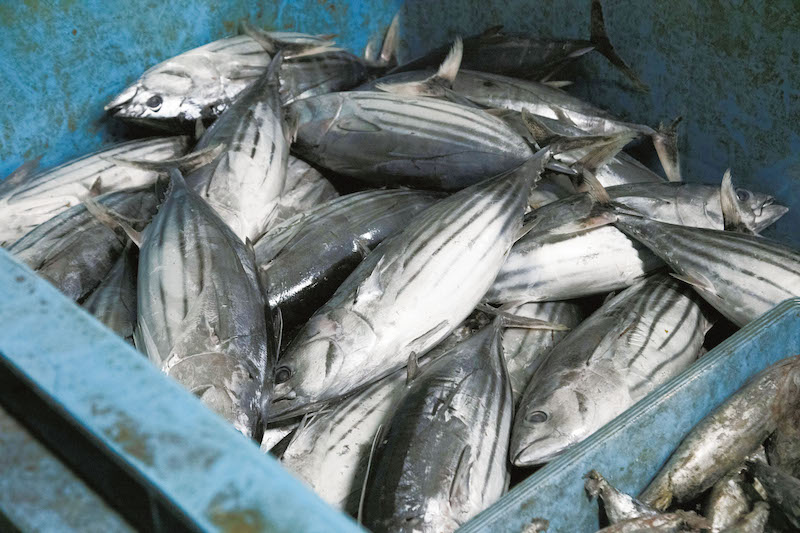
冷凍庫で保管している鰹をタンクに移し水を張り、解凍をする。夏場と冬場とでは気温が異なるため、解凍時間の調整や水の入れ替えをする必要がある。鰹節に含まれる旨味の代表格のひとつイノシン酸の生成は、この解凍具合が決め手となる。
生切り
Cut "Namagiri"
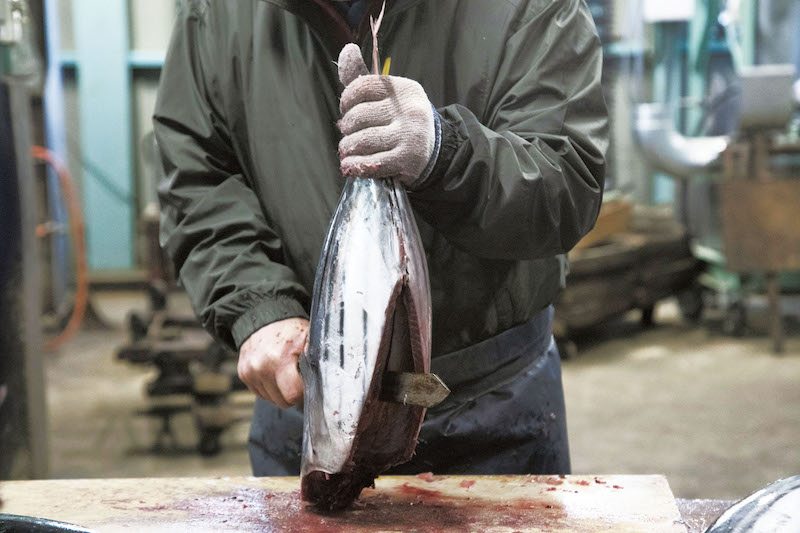
頭を落とし、はらんぼと内蔵、背びれを取り除いた後、「土佐切り」と呼ばれる鰹節製造独自の捌き方で三枚におろす。「土佐切り」という名前の由来は、尻尾をもち吊り下げて一刀両断する様が、高知県人の性格を象徴したかのような男らしく荒々しい切り方からだと言われている。捌くスピードが速いうえ、歩留りが良い(中骨に身が残らないように上手に切る)のもこの切り方の特徴である。
cut First,cut and remove the heads and guts of the skipjack
籠立て
set up
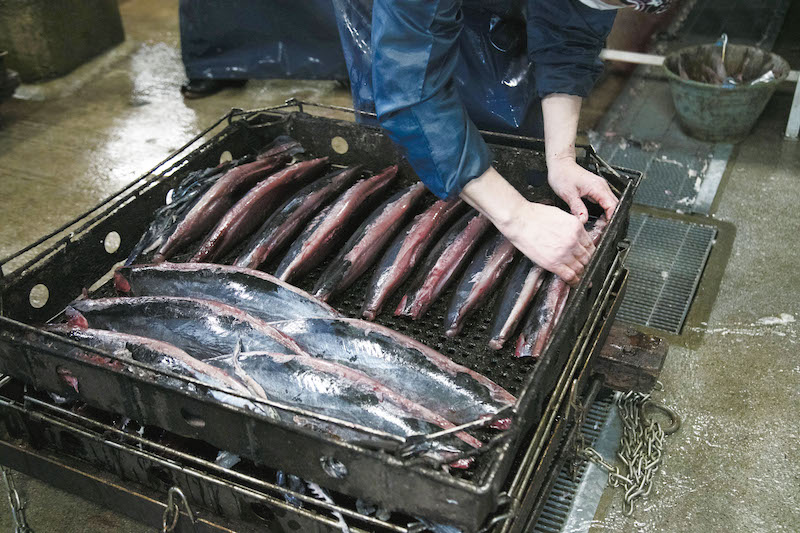
煮籠に節を丁寧に並べる。煮窯に入れる時にばらつかないよう並べ方にもコツが必要となる。取り除いた背びれなどは空いたスペースを埋めるために使用し、なるべく節が動かないようにする。
煮熟
Boil "Shajuku"
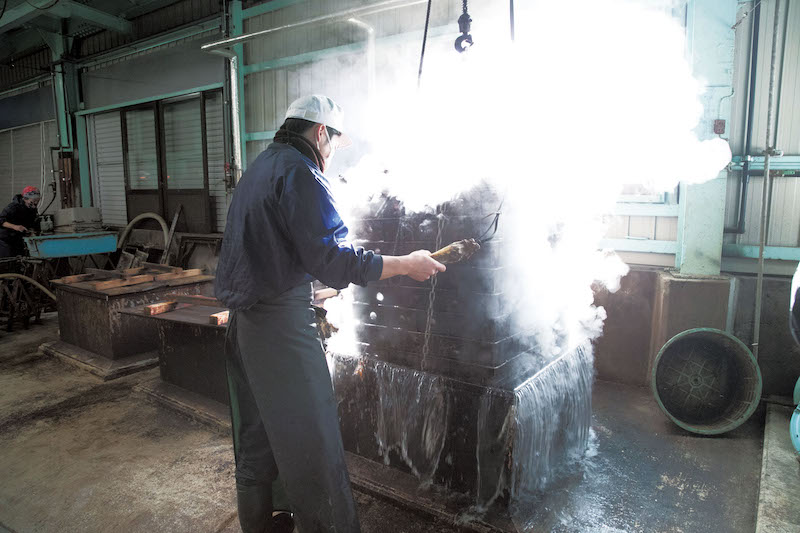
節を丁寧に並た煮籠を10段ほど重ね煮釜に入れる。煮窯の温度が高すぎると身が割れてしまう。低すぎないちょうどの温度で投入し、沸騰するかしないかぐらいの温度まで徐々に上げていく。二時間ほどかけて煮熟することにより、余分な脂と水分を落とし、旨味を凝縮させる。鰹節の旨味の主役はタンパク質であるため、じっくり煮ることでたんぱく質を残しつつ脂を除去している。脂が残っていると所謂「魚くさく」なる。血液の中に脂肪分が多く含まれている。
Boil the resulting fillets for about an hour in water heated to 85-95°C. this process deactivates the enzymas in the meat,prevents decomposition,and coagulates the protein.
放冷
cool down
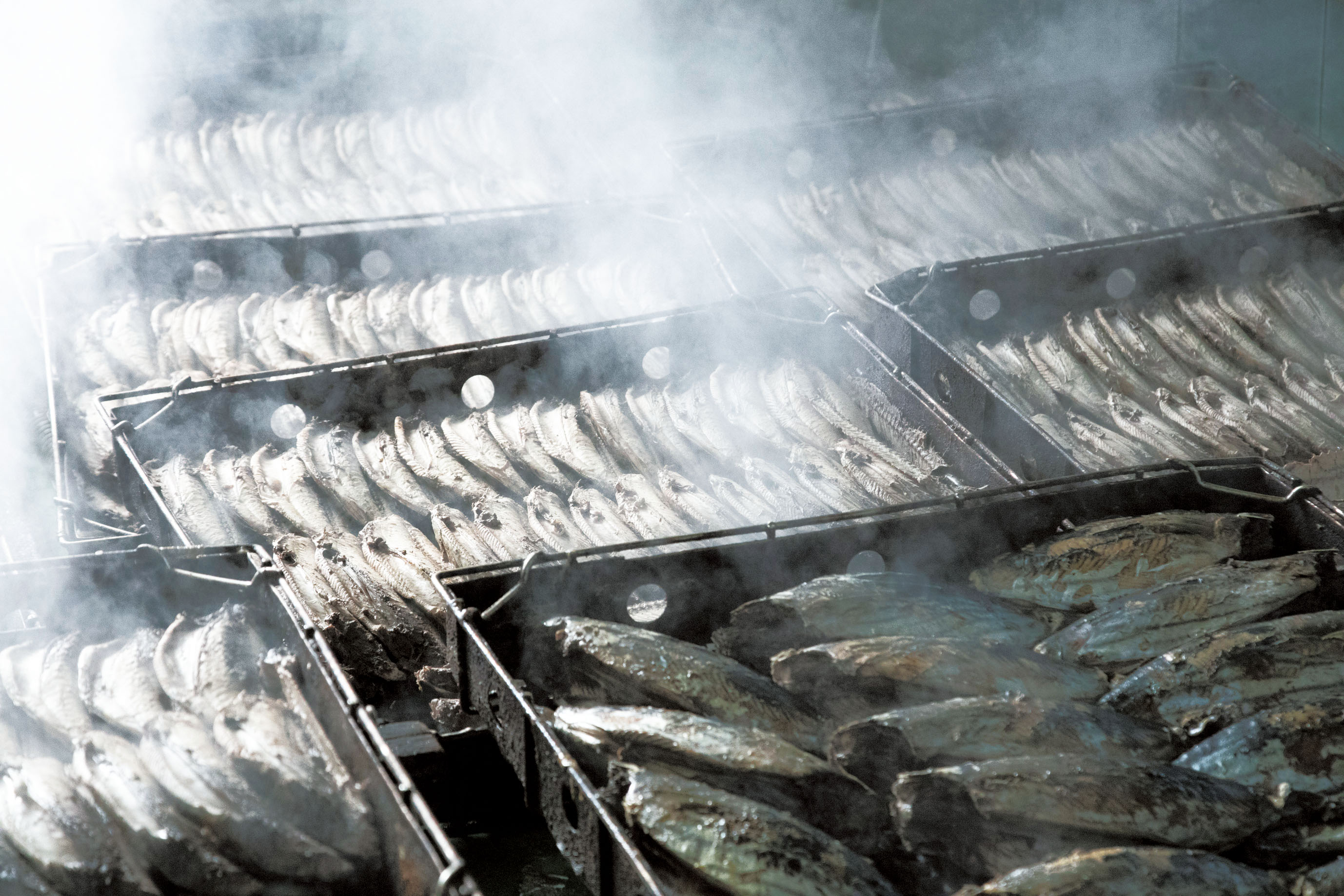
身が崩れないように注意しながら釜からおろし、風通しのよいところで広げて冷ます。冷ますことで茹で上がった鰹の身がキュッと閉まり崩れにくくなる。
バラ抜き
Cleaning"honenuki"
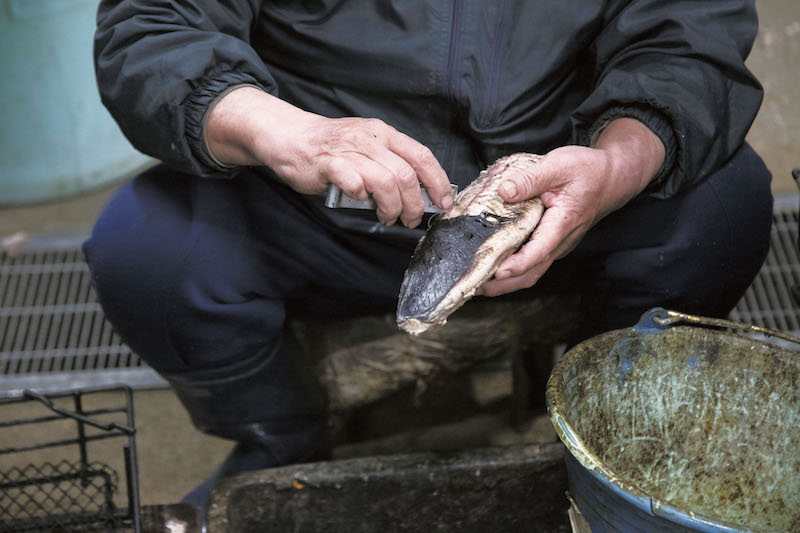
茹で上がった鰹の骨を一本一本手作業で抜き、節上部の皮も取り除いていく。節の身を崩さないように、人の目と手で丁寧に一本一本抜いていく。機械ではできない作業。昔は「バラ抜き節」とか「バラ抜き歌」というものが存在し、骨を抜きながら歌った。
the remove the bones,fins,and scales as needed.
水抜き
remove moisture at the initial stage
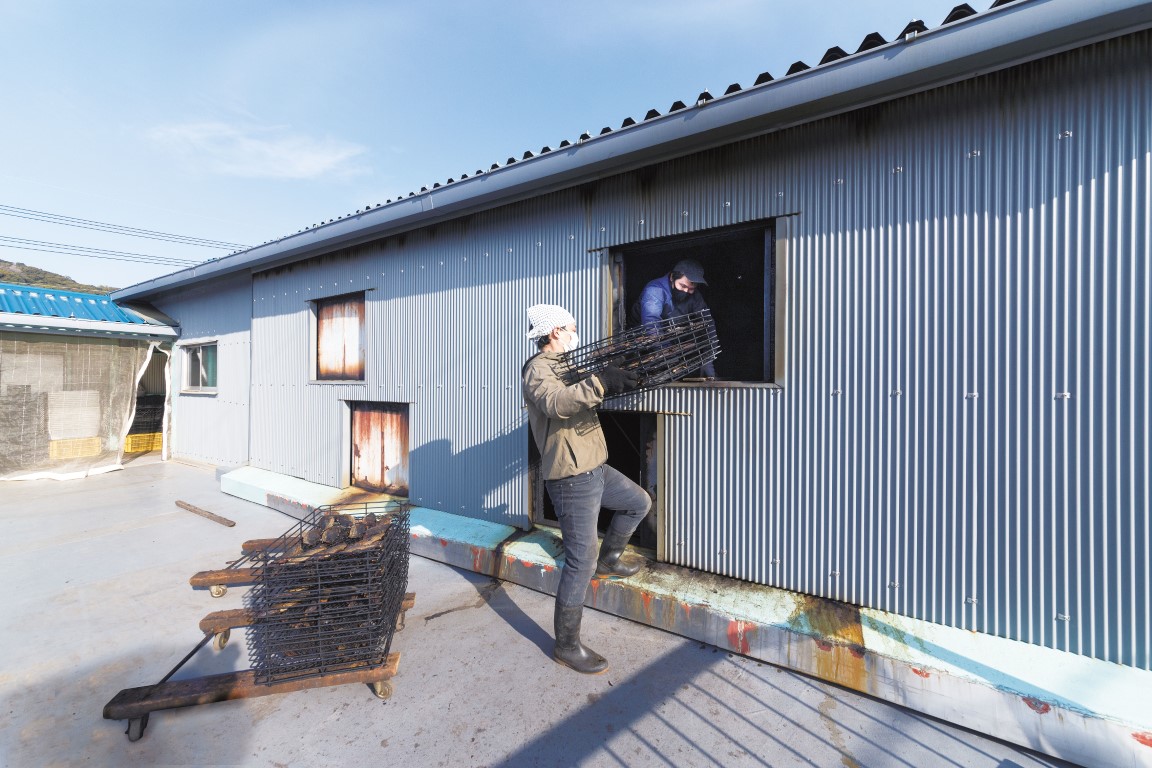
バラ抜きが完了した節を金属製のせいろに並べて「焚き納屋」に入れる。本格的な焙乾はそくいの後からであるが、そくいはバラ抜きより鰹を触る時間が長くなる工程で、一晩焙乾することで多少水分を抜き、身が崩れないようにする必要がある。
そくい
repair surface scratches
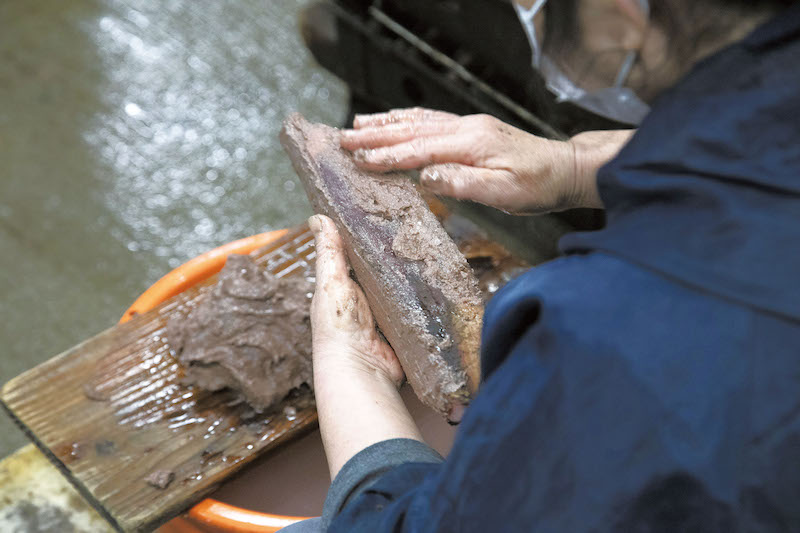
かつおの骨についた生肉と茹でた身ですり身を作り、それを表面に刷り込む。そうすることで、焙乾時の熱による身割れを防いでいる。また、ばらを抜いた節の表面はでこぼこになので、それをなめらかにすることにも、縁起物としての鰹節製造の意味がある。
焙乾
Smoke "Baikan"

煙と熱で水分と抜く工程。そくいの終わった節をせいろに並べ、焚き納屋に入れる。地下で薪を焚いて、節を燻していく。一晩燻したら、焚き納屋の中に入り乾燥具合を確認する。焚き納屋は5層に分かれていて、鰹節の水分が抜けていくにしたがって階層を下から上に移動していく。20〜25日間毎日薪を焚き、少しずつ水分を抜く。
"smoke" the next step is to repeat the smokingof the boiled and cleaned fillets of the skipjack by the smoke of firewood until its moisture content is reduced to no more than 26%.the resulting product is "arabushi""arabushi " is a highly aromatic smoked food.
【benefits of the smoking process】
repeated smoke-drying to skipjack after simmering endows "katsuobushi" with a distinctive aroma . furthermore, the phenolic substances contained in the Smoke prevent oxidation of the fats. fish fats are especially quick to oxidize and susceptible to degradation. unless being smoked dried, the skipjack fillets would soon deteriorate and never acquire that attractive "katsuobushi" flavor. the smoke-drying process is thus indispensable to the "katsuobushi" production.
削り
shave the surface of "arabushi"
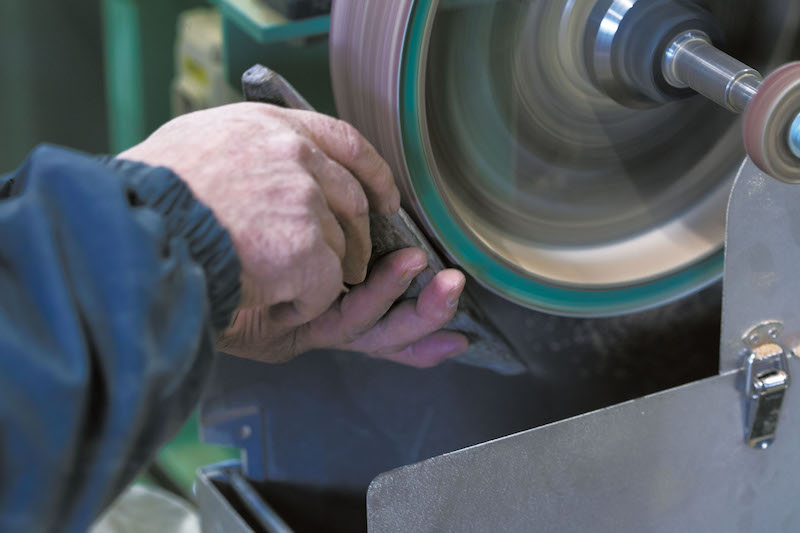
焙乾によって節についたタール分をグラインダーで削り取る。品質を左右する成形工程のため、丁寧に慎重におこなわる。
黴つけ
kabitsuke
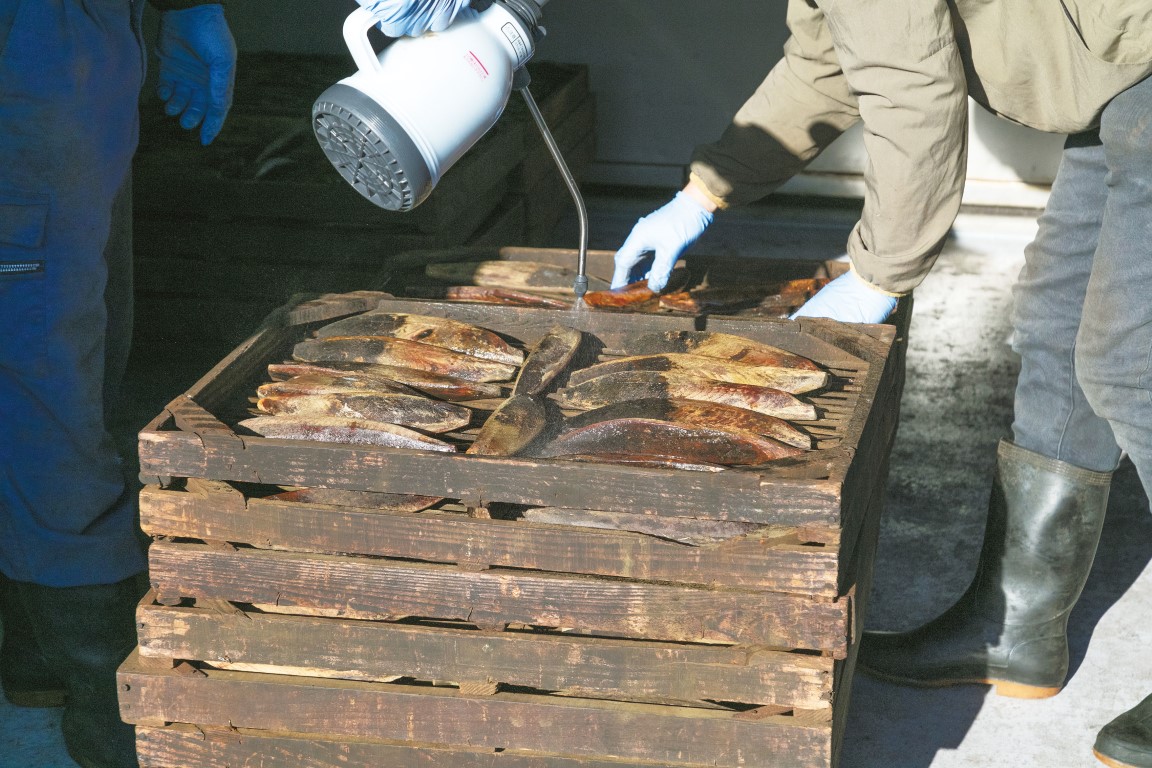
鰹節に優良カビを吹き付け、ムロに入れてカビを生えさせる。カビは繁殖する際に節から水分をうばうため、さらに乾燥が進み風味も高まっていく。
when we produce "karebushi",we first shave the surface of "arabushi" and then culture the beneficial mold twice or more("Kabitsuke" process). the resulting product is termed "karebushi"
【the vital Role of mold】
the culturing mold process plays a vital role in determining the favor of "katsuobushi". During this stage, a mold of the genus Eurotium selected for its outstanding qualities is cultured. This process serves to further reduce the moisture content still remaining in "Katsuobushi" after smoking and drying. In addition, the lipolytic enzymes contained in the mold break down the fat in the fillets, resulting in a more transparent "Dashi."
日干
sun drying
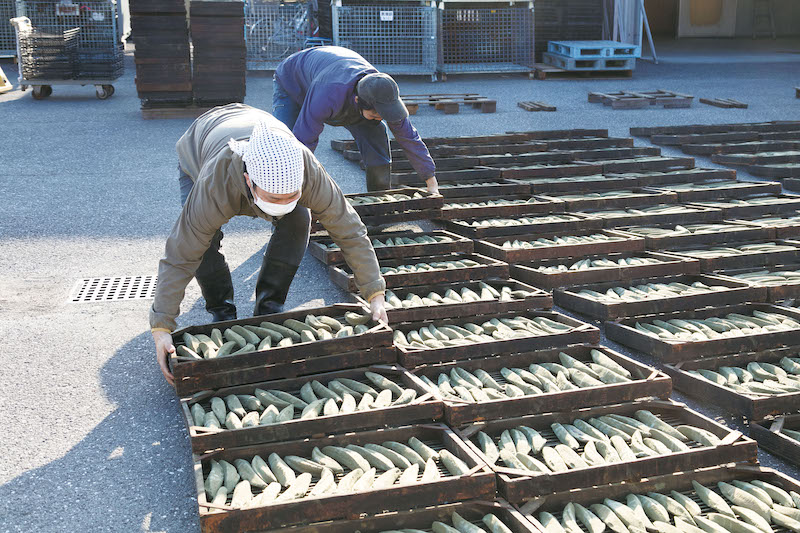
天日干しでカビ自体の水分を抜き、むろに戻し次のカビを生えさせることで、鰹の水分を抜き熟成を進める。この作業は約4か月の間に10回程度行われる。
